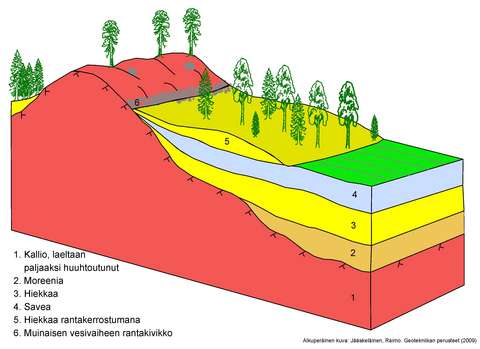Espoo’s soil and bedrock
Espoo features varying types of soil. At any one building site, bare rock as well as soft clay reaching down several metres may be found. In land-use planning, soil conditions have a significant impact on the construction costs of an area.
The landscape is dominated by the diverse features of the soil. Clay valleys, in places expanding into clayey-soil open-land habitats, are typical of Espoo, and they are bordered by rocky hill areas. In clay valleys, soil cover is often over 10 meters thick.

For a preliminary understanding of soil conditions, visit the 1:10,000 soil map (1986) in Espoo’s map service(external link, opens in a new window).
Geotechnical analysis data and constructability and soil maps can be purchased from espoo.asiointi.fi(external link, opens in a new window).
Espoo’s bedrock was formed as continental plates collided some 1,900 million years ago. In large areas of northern Espoo, the bedrock consists of granite rock types. The oval-shaped Bodom rapakivi granite, with a northeast orientation, extends from the eastern parts of Lake Bodominjärvi all the way to Vantaa. The most common rock types in central Espoo are quartz-feldspar gneiss, biotite gneiss and amphibolite. There are also layers of limestone among the schist and gneiss. The rock types of the schist belt are bordered by the granite area in southern Espoo.
Orbicular rocks, found particularly in Espoo, are a rare variety of magmatic rocks that have an unusual composition. In Espoo, orbicular rocks can be found in Nuuksio. Due to their rarity, orbicular rocks are an important subject of teaching and research.
There are also plenty of shear zones running through the bedrock. The rock in the shear zones is fractured. The most significant shear zones have a north-northeast orientation.